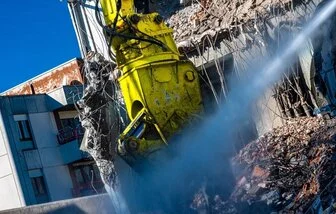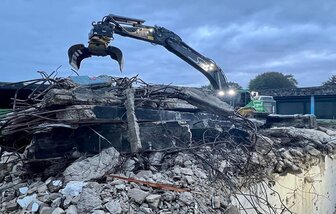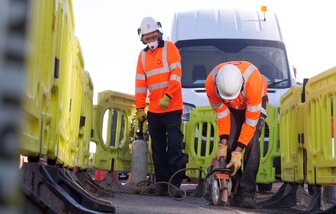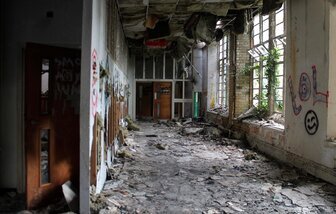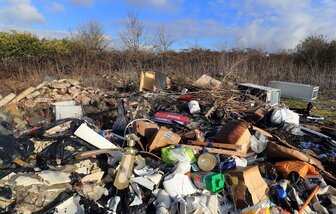Site Security: Protecting Members of the Public and Securing a Demolition Site
Site security is a critical aspect of any construction project, particularly when it comes to demolition sites. Ensuring the safety of workers, as well as the general public, is of utmost importance. In this article, we will discuss the importance of site security, steps to secure a demolition site, the significance of site fencing, and the measures to protect members of the public.
Steps to take to safeguard your demolition site
Learn about the importance of site security in construction projects, particularly in demolition sites. Discover the steps to secure a demolition site, the significance of site fencing, and measures to protect members of the public.
Implementing robust security measures, such as perimeter fencing, access control, signage, surveillance systems, and proper lighting, can significantly reduce the risks associated with unauthorized access, accidents, theft, and vandalism.
Prioritize site security to ensure smooth and safe construction projects with minimal risks to workers and the public.
Site security is essential to prevent accidents, unauthorized access, theft, and vandalism. It is the responsibility of the project managers, contractors, and site owners to implement robust security measures to mitigate risks and protect everyone involved.
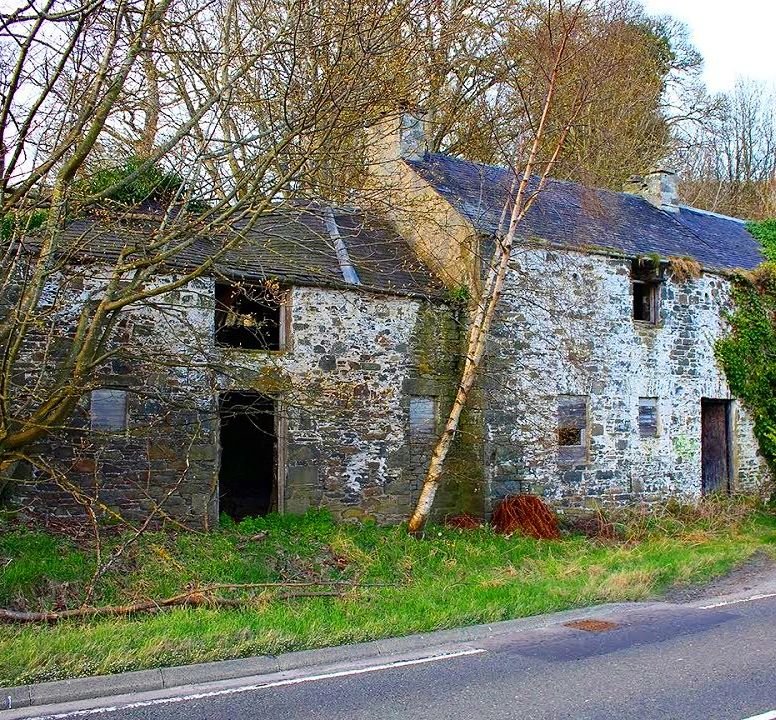
Securing a demolition site involves a series of steps to minimize potential hazards and ensure the safety of workers and the public. Here are some key measures to consider:
1. Perimeter Fencing
Installing a sturdy perimeter fence around the demolition site is crucial. This serves as a physical barrier to prevent unauthorized entry and keeps the public at a safe distance. The fence should be made of durable materials and be at an appropriate height to deter intruders.
2. Access Control
Implementing access control measures is vital to restrict entry to authorized personnel only. This can include the use of gates, security guards, or electronic access systems. By limiting access, the risk of accidents and theft can be significantly reduced.
3. Signage and Warnings
Clear and visible signage should be placed around the demolition site to warn the public of potential dangers. This includes displaying signs indicating restricted access, hazardous materials, and any specific safety precautions that need to be followed.
4. Surveillance Systems
Installing surveillance cameras can help monitor the site 24/7. This not only deters potential intruders but also provides valuable evidence in case of any incidents. Surveillance systems should cover all critical areas of the site, including entry points and high-risk zones.
5. Lighting
Proper lighting is essential to enhance visibility and deter trespassers during nighttime. Well-lit areas reduce the risk of accidents and discourage criminal activities. Adequate lighting should be provided throughout the site, including walkways, entrances, and parking areas.
Site fencing plays a crucial role in enhancing site security. It acts as a physical barrier, preventing unauthorized access and keeping the public at a safe distance. Here are some key benefits of site fencing:
1. Safety
Site fencing provides a clear boundary between the construction site and the public. This helps prevent accidents and injuries by keeping people away from potentially hazardous areas.
2. Security
A well-constructed fence acts as a deterrent to trespassers, vandals, and thieves. It makes it more challenging for unauthorized individuals to access the site, reducing the risk of theft or damage to equipment and materials.
3. Legal Compliance
Many local regulations and building codes require the installation of site fencing for construction and demolition sites. Compliance with these regulations ensures that the project operates within the legal framework and avoids potential penalties.
Protecting Members of the Public
Ensuring the safety of members of the public is a crucial aspect of site security. Here are some measures to consider:
1. Public Awareness
Creating awareness among the public about the potential hazards of a demolition site is essential. This can be done through public announcements, signage, or local media to inform people about the dangers and the need to stay away from the site.
2. Traffic Control
If the demolition site is located near a road or pedestrian pathway, proper traffic control measures should be implemented. This can include redirecting traffic, setting up barriers, or providing alternative routes to ensure the safety of pedestrians and motorists.
3. Regular Inspections
Regular inspections of the site should be conducted to identify any potential safety risks or breaches in security. This allows for prompt action to rectify any issues and ensures that the site remains secure throughout the demolition process.
In conclusion, site security is of utmost importance, especially when it comes to demolition sites. By implementing robust security measures, including perimeter fencing, access control, signage, surveillance systems, and proper lighting, the risks associated with unauthorized access, accidents, theft, and vandalism can be significantly reduced.
Additionally, protecting members of the public through public awareness, traffic control, and regular inspections is crucial to ensure their safety. By prioritizing site security, construction projects can proceed smoothly and safely, with minimal risks to workers and the public.
Demolition is a complex process that involves the dismantling or destruction of structures, and it requires careful planning and execution to ensure the safety of workers, the public, and the environment. In the United Kingdom, there are specific laws and regulations in place to govern demolition activities, with a particular focus on site security and Health and Safety Executive (HSE) inspections. This blog post will outline the key requirements that UK laws demand before the commencement of any demolition project.
1. Notification to the Local Authority
Prior to starting any demolition work, it is a legal requirement to notify the local authority. This notification should include details such as the location of the site, the nature of the demolition work, and the expected duration of the project. The local authority will then assess the notification and may request additional information or impose conditions to ensure compliance with safety regulations.
2. Health and Safety Plan
A comprehensive Demolition Health and Safety Plan is a crucial document that outlines how the demolition project will be carried out safely. This plan should include a risk assessment, a method statement, and details of any necessary safety measures, such as protective equipment and site security measures. The plan should be regularly reviewed and updated throughout the project to address any new risks or changes in circumstances.
3. Site Security Measures
Site security is of utmost importance during demolition projects to prevent unauthorized access and protect the safety of workers and the public. UK laws require the implementation of appropriate site security measures, which may include fencing, barriers, signage, and CCTV surveillance. These measures help to deter trespassers and ensure that only authorized personnel have access to the site.
4. Asbestos Survey and Removal
Asbestos is a hazardous material commonly found in older buildings, and its presence must be carefully managed during demolition projects. Before commencing any work, a thorough asbestos survey should be conducted to identify the presence and condition of asbestos-containing materials (ACMs). If ACMs are found, they must be safely removed and disposed of by licensed professionals in accordance with the Control of Asbestos Regulations.
5. HSE Inspections
The HSE plays a vital role in ensuring compliance with health and safety regulations in the UK. As part of their enforcement activities, the HSE conducts inspections on demolition sites to assess compliance with legal requirements and identify any potential hazards or breaches. These inspections may be planned or unannounced, and the HSE has the power to issue enforcement notices or take legal action if necessary.
6. Safe Removal of Hazardous Materials
Demolition projects often involve the removal of various hazardous materials, such as lead-based paint, chemicals, or flammable substances. It is essential to handle and dispose of these materials safely, following the relevant regulations and guidelines. Failure to do so can pose significant risks to workers, the environment, and public health.
Conclusion
Demolition site security and compliance with UK laws are critical to ensure the safety of workers, the public, and the environment. By following the necessary procedures, such as notifying the local authority, developing a comprehensive Health and Safety Plan, implementing site security measures, conducting asbestos surveys, and complying with HSE inspections, demolition projects can be carried out in a safe and legally compliant manner. It is crucial for all parties involved in demolition projects to be aware of these requirements and prioritize the well-being of everyone affected by the process.
What is demolition?
The process involves Rotational hydraulic shears and rock-beakers attached to specialist excavators are also used to cut or break through wood, cut steel and crush concrete which reduces the structure to a rubble
Securing your demolition project
Implementing robust security measures, such as perimeter fencing, access control, signage, surveillance systems, and proper lighting, can significantly reduce the
Demolition hazards
If a demolition project is well planned the risks of injury and death can be minimised. It should be emphasised that the planning and execution of a demolition project should only be done by appropriately competent persons.
Notification of intended demolition Section 80
If your considering demolishing an existing building you will need to submit a demolition, Section 80 Notice together with your (RAMS) to your local authority according to section 80
Welfare facilities
Welfare facilities are an essential component of any demolition project. By providing suitable facilities, employers prioritize the well-being and safety of their workers, leading to increased
Demolition plant
Demolition plant is essential in the construction industry, as they ensure the safe and efficient removal of structures. By following strict guidelines and regulations, these plants prioritise safety, efficiency, and sustainability.
Utilities disconnection
Terminating utilities at the boundary is a critical step in the demolition process. It ensures the safety of the demolition crew and the surrounding environment, helps comply with regulations, prevents damage to utilities
Internal soft strip
Soft strip demolition is a crucial process that involves the removal of the internal structure of a building, making it ready for demolition or refurbishment. This process includes the careful removal of various materials.
Planning your demolition project
Learn how to create an effective demolition plan for your construction project. This comprehensive guide covers the key steps, including site assessment, hazard identification, safety measures, waste management, and more.
Managing asbestos
Learn about the dangers of asbestos, its different types, and where it can be found. Understand the health risks associated with asbestos exposure and the importance of proper testing and safe removal. Protect yourself and others from the harmful effects of asbestos.
Dealing with waste
Learn about waste management practices in demolition projects and the legal requirements that must be followed. Understand the types of demolition waste, effective waste management practices, and the laws and regulations governing waste management
Hazardous waste liquids
Hazardous liquids in demolition projects. Understand the importance of identifying, segregating, and properly disposing of hazardous waste. Follow the guidelines the safe handling, storage, and disposal of hazardous
Ready to start your project?
Let's Work Together
Please complete the form below and someone from the Total team will be in touch.

